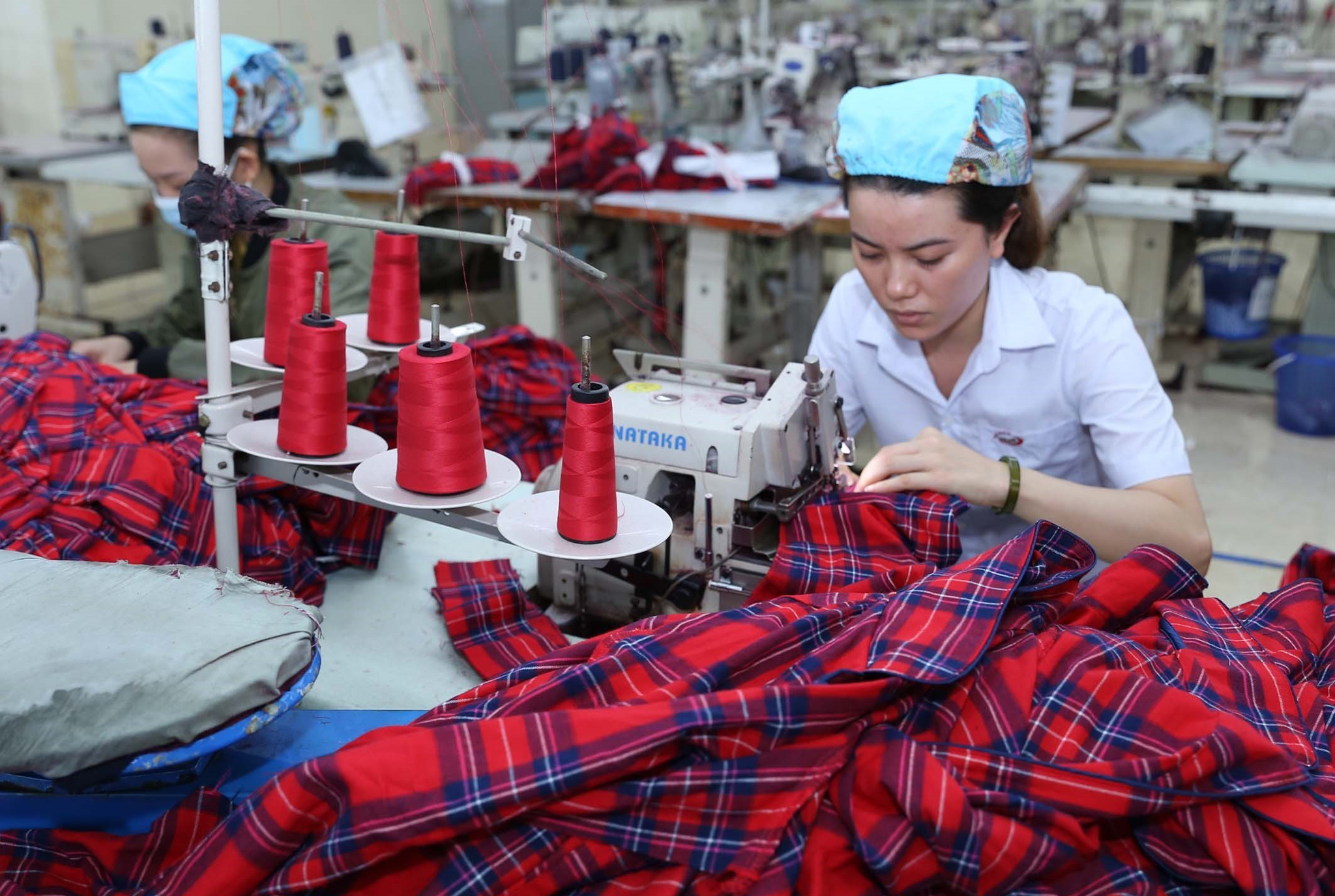The Comprehensive and Progressive Agreement for Trans-Pacific Partnership (CPTPP) is expected to bring about opportunities to increase exports for many sector, including manufacturing-processing, experts have predicted.
However, according to the Ministry of Industry and Trade (MoIT), the deal, which took effect from January 14 this year, also goes with challenges, requiring Vietnamese firms to be carefully prepared and design long-term strategiesto enhance their competitiveness in the world market.
The signing of the CPTPP is a new step forward by Vietnam in the international economic integration process, helping the country multilateralise its economy and relations and avoid risks of dependence on several big markets.
A representative from the ministry said that in the CPTPP, commitments of opening that partners give to Vietnam is deeper and faster compared to those by Vietnam.
Specifically, they will erase tariff on about 78-95 percent of tax lines for Vietnam. For common commodities, the roadmap of tax erasing takes 5-10 years. At the end of the roadmap, 98-100 percent of the tax lines will be eliminated.
“This is the highest commitment that Vietnam has received from existing FTAs. On the other hand, Vietnam will immediately remove 65 percent of the total tax lines and 97.8 percent in the 11th years,” said the representative.
“The roadmap of tax removal will take 5-10 years, at the end of which, 98-100 percent of the total tax lines will be erased.”
Another advantage that the CPTPP gives Vietnam is the setting up of free trade relations with more partners in further distance, and the motivation for domestic firm to explore new markets.
Alongside, the structure of major exports of CPTPP members is supplementary with those of Vietnam with little competition. Therefore, the deal is expected to open up the door for many Vietnamese products in the processing-manufacturing sector such as garment, footwear, furniture and aquatic products to new markets like Canada, Mexico and Peru.
The MoIT representative held that the deal will create chances for furniture exporters to promote export as many wooden products enjoy tax exemption instead of the 6-9.5 percent previously.
Canada has agreed to immediately reduce the tax rate for the products from 7 percent to zero percent.
Notably, thanks to the CPTPP, Vietnamese firms will enjoy opportunities to penetrate deeper into the Mexican market as the country has committed to totally remove import taxes for Vietnamese wooden products within a 10-year roadmap.

Experts have asserted that for the garment and textile sector, when the CPTPP takes effects, Vietnamese products meeting common technical standards will enjoy the zero percent tax rate instead instead of the previous over 10 percent, and this gives Vietnam higher competitiveness in price.
This is also a motivation for both domestic and foreign investors to develop material production and support industry in Vietnam, form a more effective production chain and create a foundation for the sustainable growth of the sector.
At the same time, the CPTPP will prompt Vietnamese firms to seek more opportunities in new markets in the South American region, they held.
From the viewpoint of a business, Cao Huu Hieu, CEO of Vietnam National Textile and Garment Group (Vinatex), commented that the CPTPP will help increase investment in material production, thus forming the support industry for garment and textile sector.
“Thanks to opportunities from the deal, many foreign investors will see Vietnam as an attractive destination due to various factors such as market chances, alternative supply source strategy and production costs,” stated Hieu.
Meanwhile, Vietnam’s footwear sector is forecast to access promising lands such as Mexico and Canada which give them more chances to develop new products with higher added value.
However, it depends on the capacity of businesses in optimising the advantages to turn the chances into specific figures.
According to the MoIT, conditions for receiving tax preferences in a new generation and comprehensive FTA like the CPTPP are not simple.
Meanwhile, Vietnamese goods also face many technical barriers and strict origin requirements.
Specifically, under the CPTPP, in order to get preferences, exports of member countries must originate from countries inside the bloc. This is a difficulty for Vietnam as the country mostly imports materials from China or the Republic of Korea.
Besides, technical regulations such as packaging, labeling and chemical contents in exports are also another obstacle for Vietnamese products.

Meanwhile, joining the CPTPP, Vietnam will open its door to foreign goods and services, which means that domestic firms will face more competition, especially those in automobile production and assembling. Failure right in the domestic market will become a great risk.
For the garment and textile sector, the utilisation of tax advantages is not easy as the sector must satisfy strict technical and origin requirements.
A representative from the MoIT’s Industry Agency said that with the current capacity and skill level, Vietnamese firms can meet technical demands, but origin requirements remain a great obstacle because over 60 percent of material for the industry is imported from countries outside the CPTPP.
The material issue is a hard nut to crack. Although many investors are keen on the support industry for the sector, few can meet requirements in environmental protection.

For the footwear sector, Vietnamese brands are still unfamiliar to customers in promising markets such as Mexico and Canada.
In order to conquer the markets, Vietnamese products must have high quality, while exporters have to pay attention to building trademarks and confirming their unique value, said the representative.
“With the regulation of 55 percent in localisation proportion, Vietnamese firms will face many difficulties as they are largely dependent on imported materials.”
“Solutions for the problem cost time, financial resources and brainpower. Vietnamese firms should build their own plans of action to improve production capacity in order to make full use of advantages in tariff brought about by not only the CPTPP but also all other FTAs,” stated the representative./.
